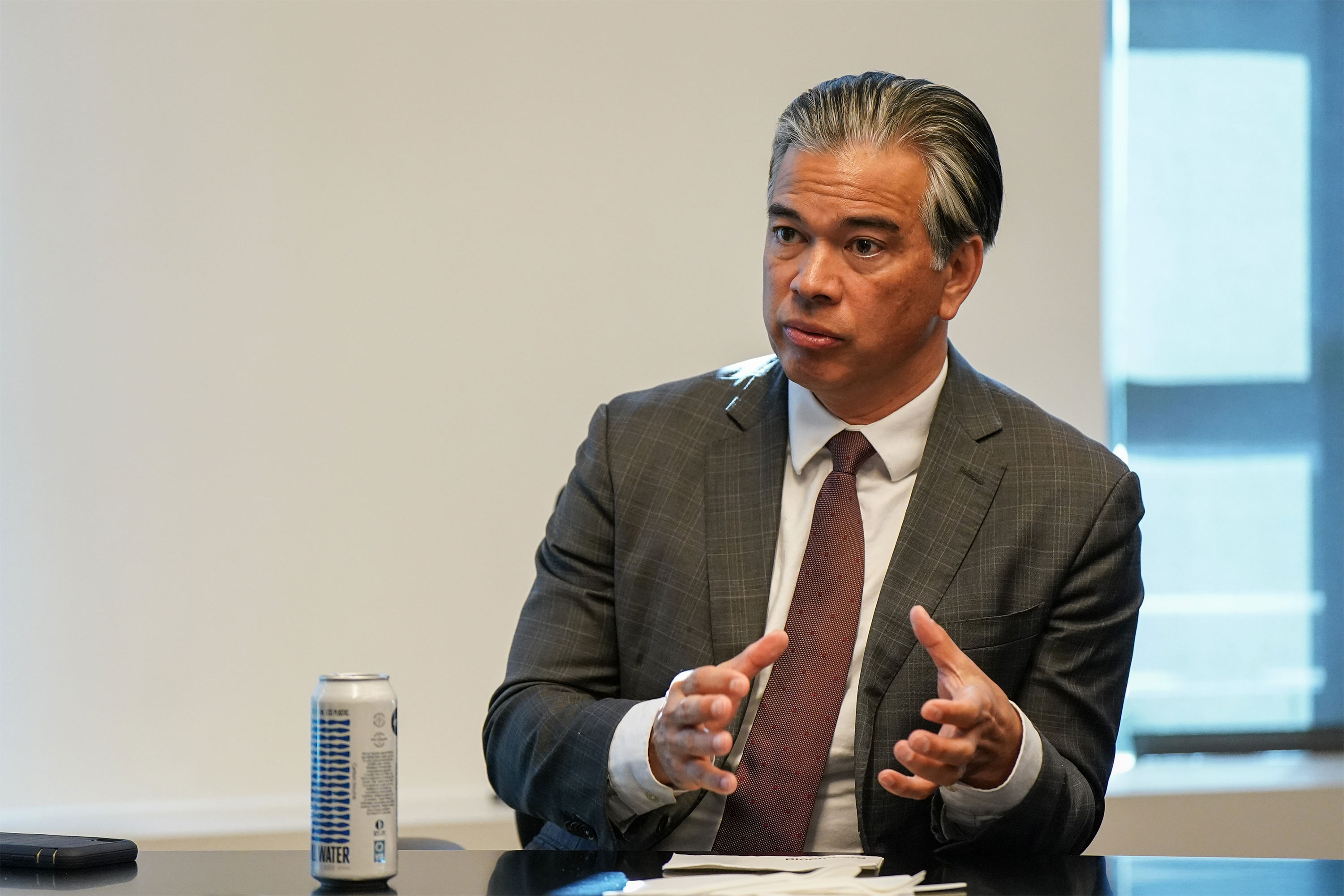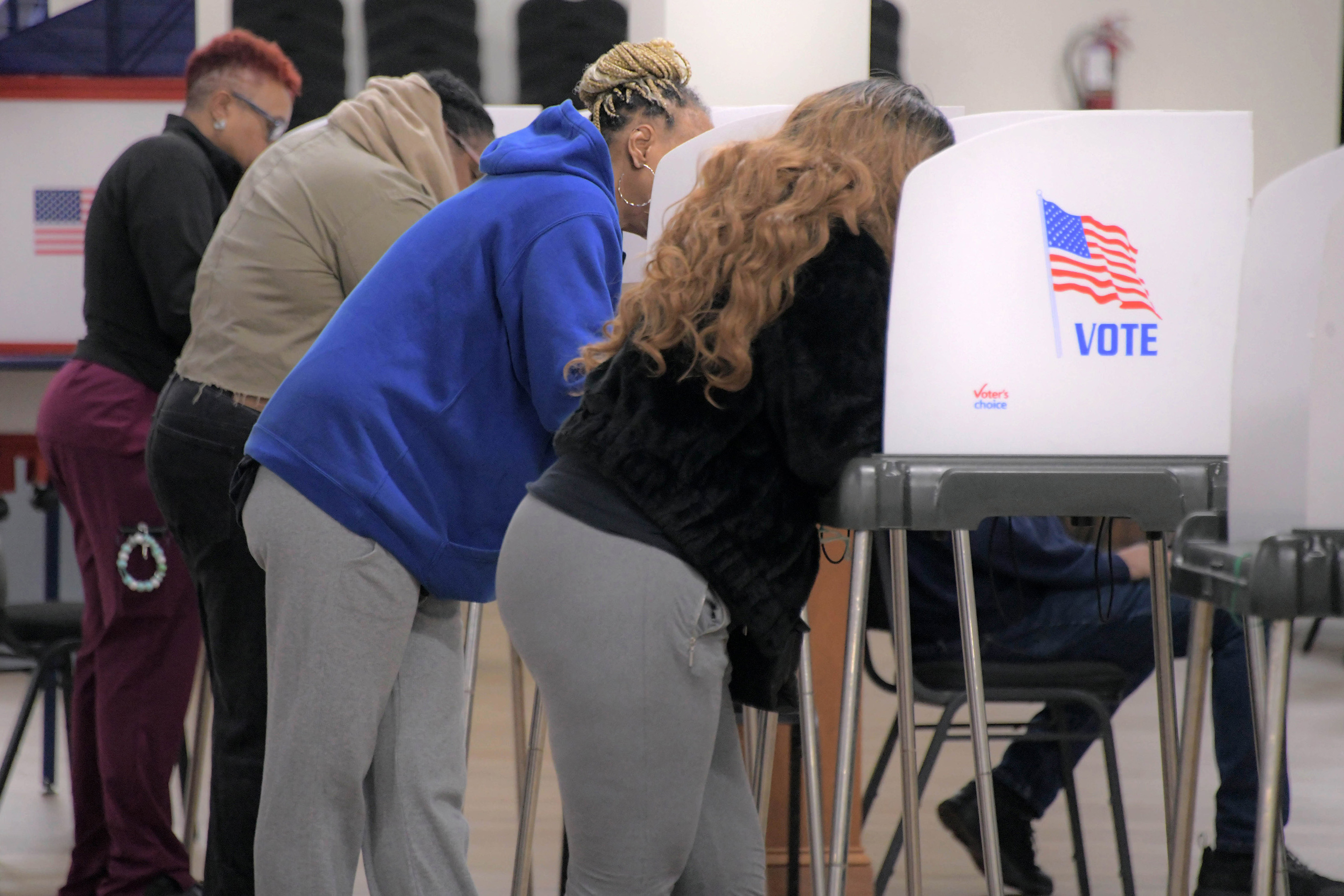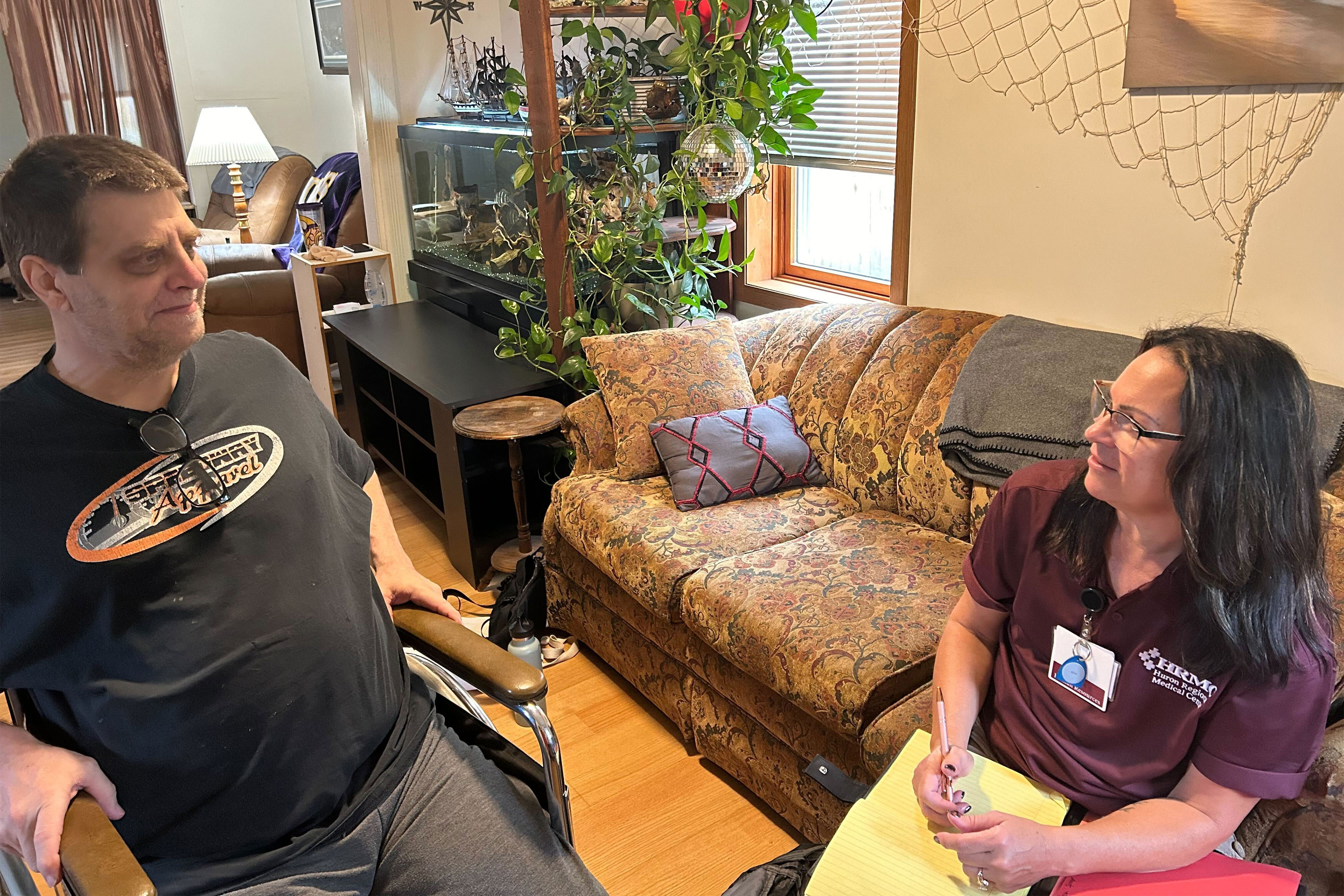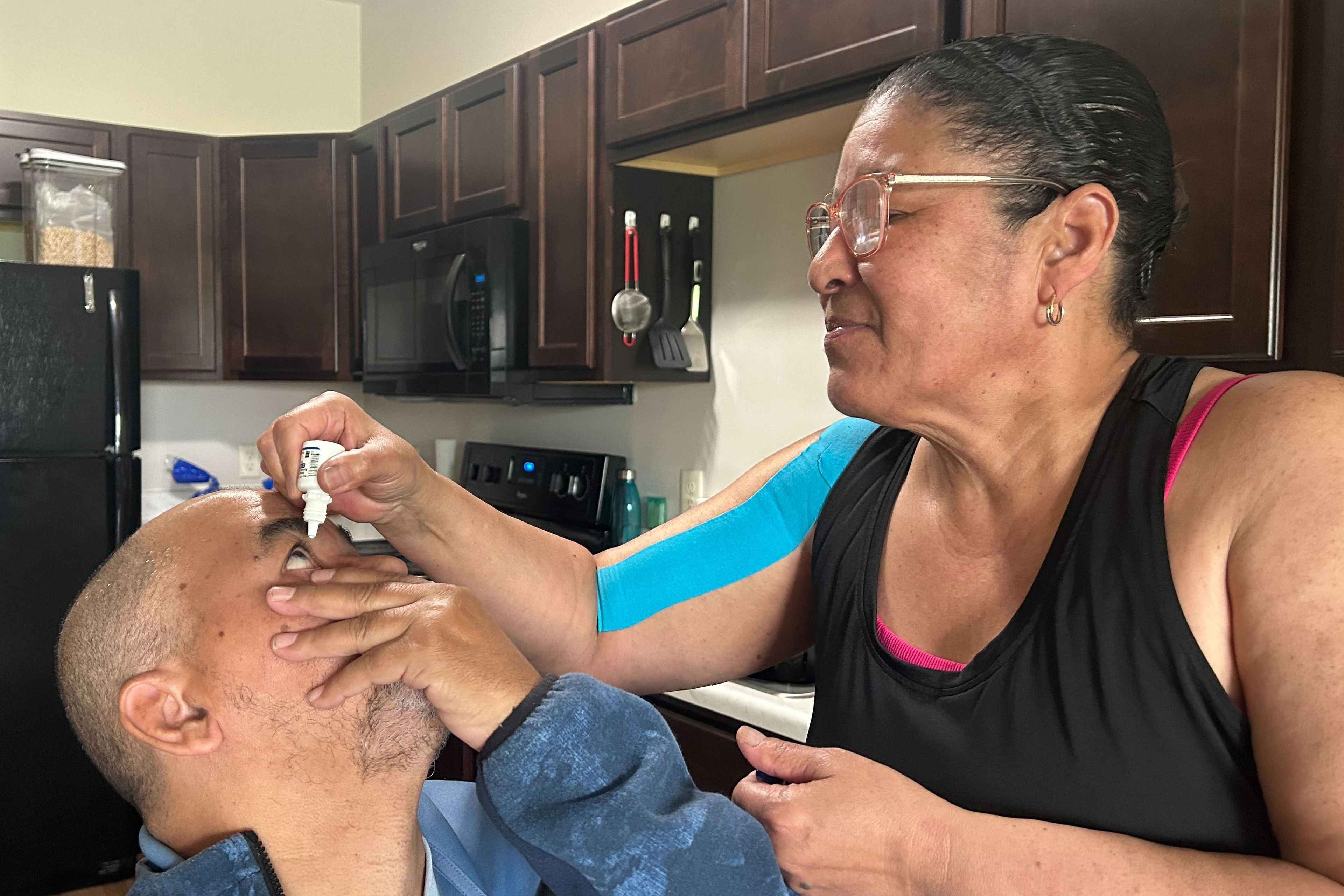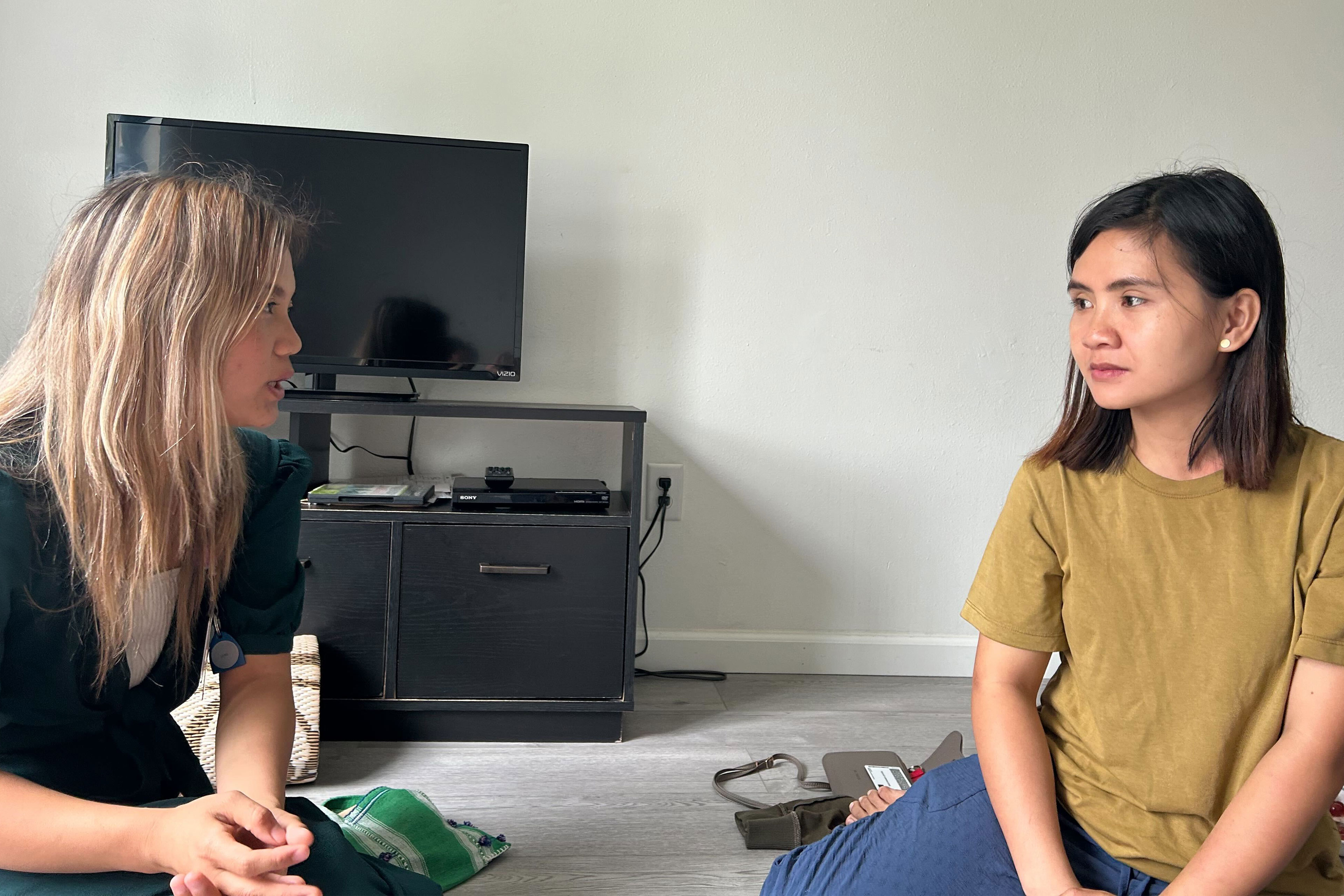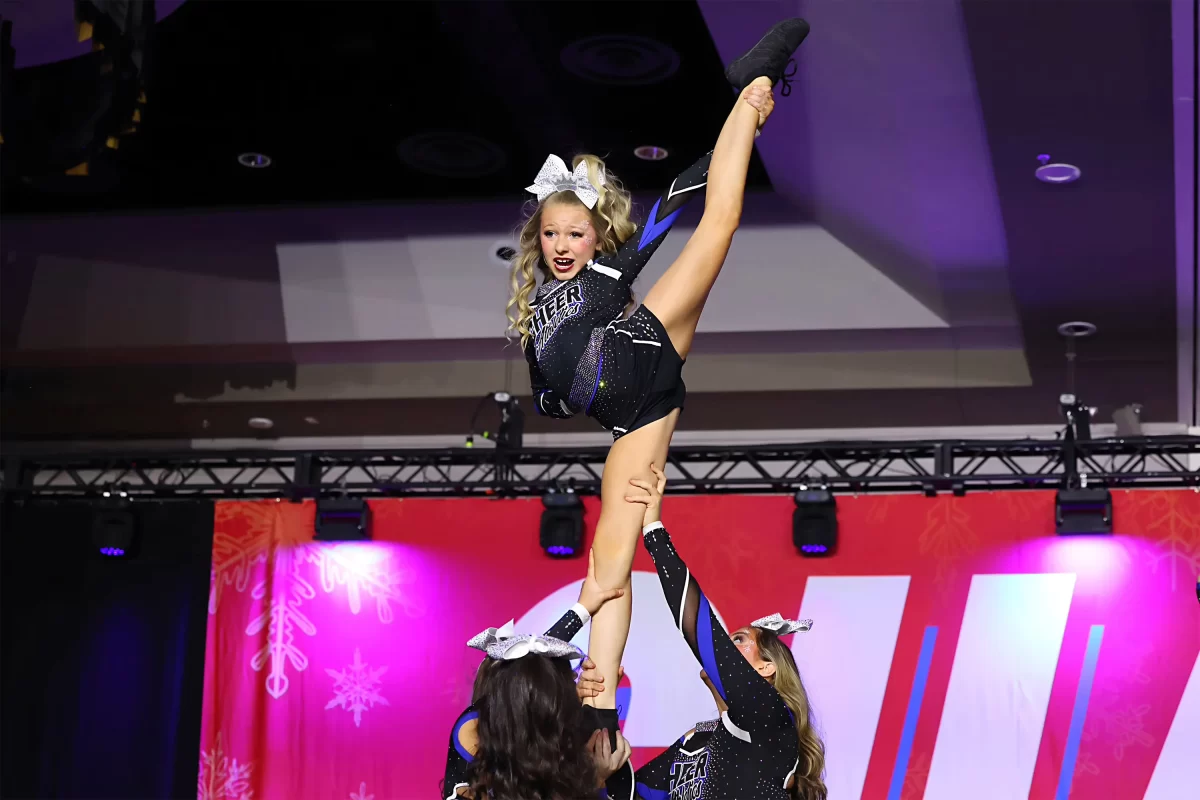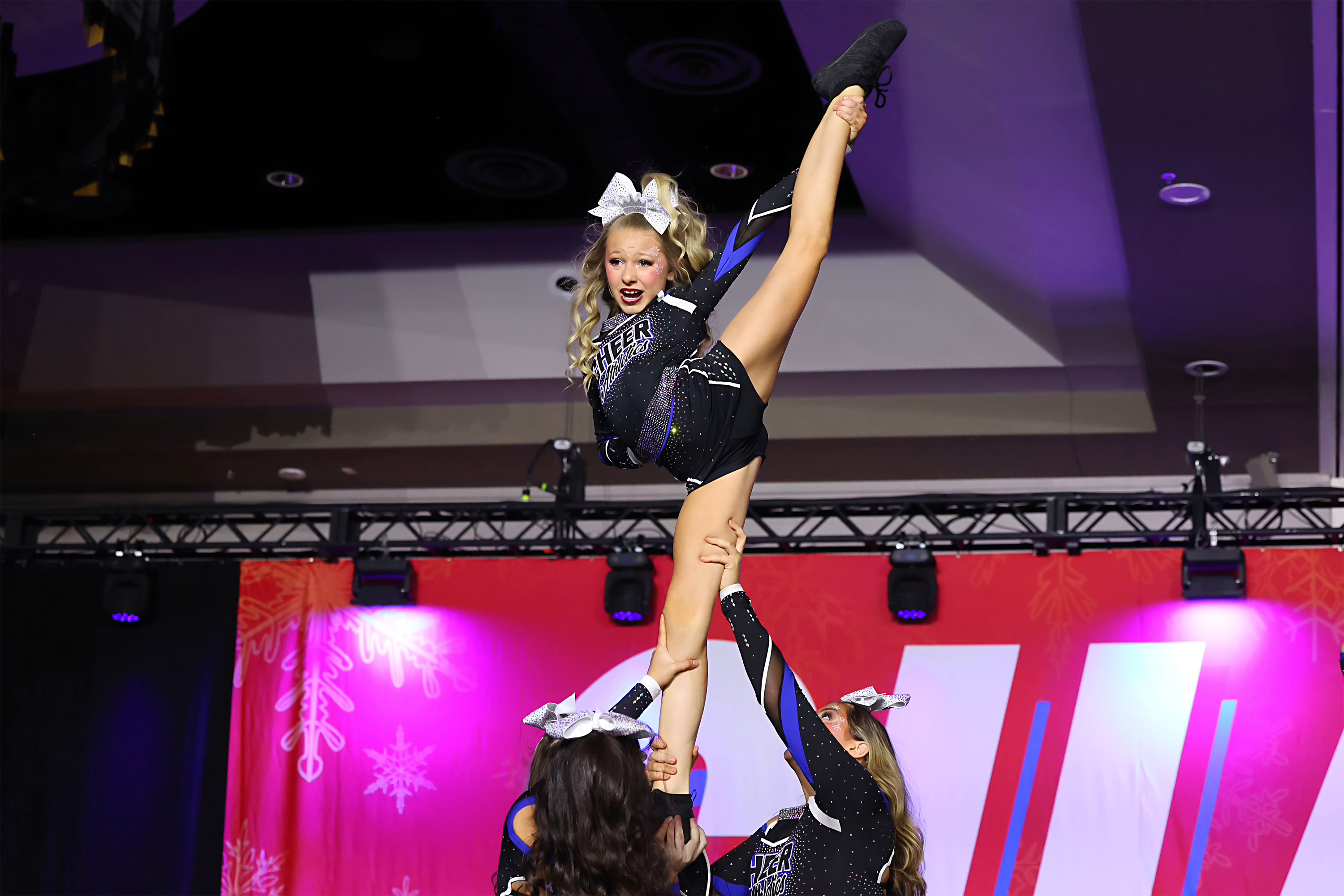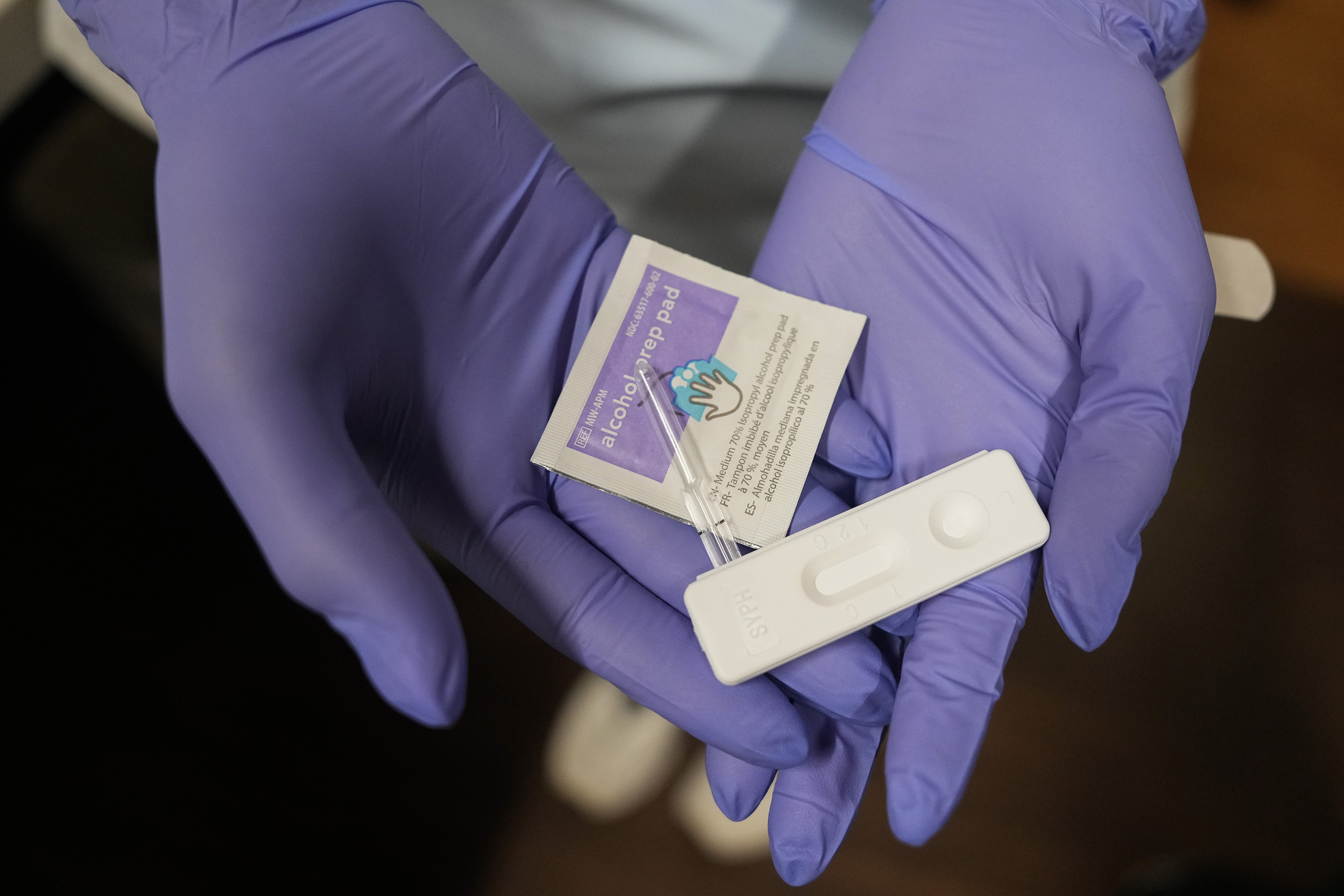
Natalie Holt sees reminders nearly everywhere of the serious toll a years-long syphilis outbreak has taken in South Dakota. Scrambling to tamp down the spread of the devastating disease, public health officials are blasting messages to South Dakotans on billboards and television, urging people to get tested.
Holt works in Aberdeen, a city of about 28,000 surrounded by a sea of prairie, as a physician and the chief medical officer for the Great Plains Area Indian Health Service, one of 12 regional divisions of the federal agency responsible for providing health care to Native Americans and Alaska Natives in the U.S.
The response to this public health issue, she said, is not so different from the approach with the coronavirus pandemic — federal, state, local, and tribal groups need to “divide and conquer” as they work to test and treat residents. But they are responding to this crisis with fewer resources because federal officials haven’t declared it a public health emergency.
The public pleas for testing are part of health officials’ efforts to halt the outbreak that has disproportionately hurt Native Americans in the Great Plains and Southwest. According to the Great Plains Tribal Epidemiology Center, syphilis rates among Native Americans in its region soared by 1,865% from 2020 to 2022 — over 10 times the 154% increase seen nationally during the same period. The epidemiology center’s region spans Iowa, Nebraska, North Dakota, and South Dakota. The center also found that 1 in 40 Native American and Alaska Native babies born in the region in 2022 had a syphilis infection.
The rise in infections accelerated in 2021, pinching public health leaders still reeling from the coronavirus pandemic.
Three years later, the outbreak continues — the number of new infections so far this year is 10 times the full 12-month totals recorded in some years before the upsurge. And tribal health leaders say their calls for federal officials to declare a public health emergency have gone unheeded.
Pleas for help from local and regional tribal health leaders like Meghan Curry O’Connell, the chief public health officer for the Great Plains Tribal Leaders’ Health Board and a citizen of the Cherokee Nation, preceded a September letter from the National Indian Health Board, a Washington, D.C.-based nonprofit that advocates for health care for U.S. tribes, to publicly urge the Department of Health and Human Services to declare a public health emergency. Tribal leaders said they need federal resources including public health workers, access to data and national stockpile supplies, and funding.
According to data from the South Dakota Department of Health, 577 cases of syphilis have been documented this year in the state. Of those, 430 were among Native American people — making up 75% of the state’s syphilis cases, whereas the group accounts for just 9% of the population.
The numbers can be hard to process, O’Connell said.
“It’s completely preventable and curable, so something has gone horribly wrong that this has occurred,” she said.
The Great Plains Tribal Leaders’ Health Board first called on HHS to declare a public health emergency in February. O’Connell said the federal agency sent a letter in response outlining some resources and training it has steered toward the outbreak, but it stopped short of declaring an emergency or providing the substantial resources the board requested. The board’s now months-old plea for resources was like the recent one from the National Indian Health Board.
“We know how to address this, but we do need extra support and resources in order to do it,” she said.
Syphilis is a sexually transmitted infection that can result in life-threatening damage to the heart, brain, and other organs if left untreated. Women infected while pregnant can pass the disease to their babies. Those infections in newborns, called congenital syphilis, kill dozens of babies each year and can lead to devastating health effects in others.
Holt said the Indian Health Service facilities she oversees have averaged more than 1,300 tests for syphilis monthly. She said a recent decline in new cases detected each month — down from 92 in January to 29 in September — may be a sign that things are improving. But a lot of damage has been done during the past few years.
Cases of congenital syphilis across the country have more than tripled in recent years, according to the Centers for Disease Control and Prevention. In 2022, 3,700 cases were reported — the most in a single year since 1994.
The highest rate of reported primary and secondary syphilis cases in 2022 was among non-Hispanic American Indian or Alaska Native people, with 67 cases per 100,000, according to CDC data.
O’Connell and other tribal leaders said they don’t have the resources needed to keep pace with the outbreak.
Chief William Smith, vice president of Alaska’s Valdez Native Tribe and chairperson of the National Indian Health Board, told HHS in the organization’s letter that tribal health systems need greater federal investment so the system can better respond to public health threats.
Rafael Benavides, HHS’ deputy assistant secretary for public affairs, said the agency has received the letter sent in early September and will respond directly to the authors.
“HHS is committed to addressing the urgent syphilis crisis in American Indian and Alaska Native communities and supporting tribal leaders’ efforts to mobilize and raise awareness to address this important public health crisis,” he said.
Federal officials from the health department and the CDC have formed task forces and hosted workshops for tribes on how to address the outbreak. But tribal leaders insist a public health emergency declaration is needed more than anything else.
Holt said that while new cases seem to be declining, officials continue to fight further spread with what resources they have. But obstacles remain, such as convincing people without symptoms to get tested for syphilis. To make this easier, appointments are not required. When people pick up medications at a pharmacy, they receive flyers about syphilis and information about where and when to get tested.
Despite this “full court press” approach, Holt said, officials know there are people who do not seek health care often and may fall through the cracks.
O’Connell said the ongoing outbreak is a perfect example of why staffing, funding, data access, and other resources need to be in place before an emergency develops, allowing public health agencies to respond immediately.
“Our requests have been specific to this outbreak, but really, they’re needed as a foundation for whatever comes next,” she said. “Because something will come next.”
Healthbeat is a nonprofit newsroom covering public health published by Civic News Company and KFF Health News. Sign up for its newsletters here.
This article was produced by KFF Health News, a national newsroom that produces in-depth journalism about health issues and is one of the core operating programs at KFF — the independent source for health policy research, polling, and journalism.
